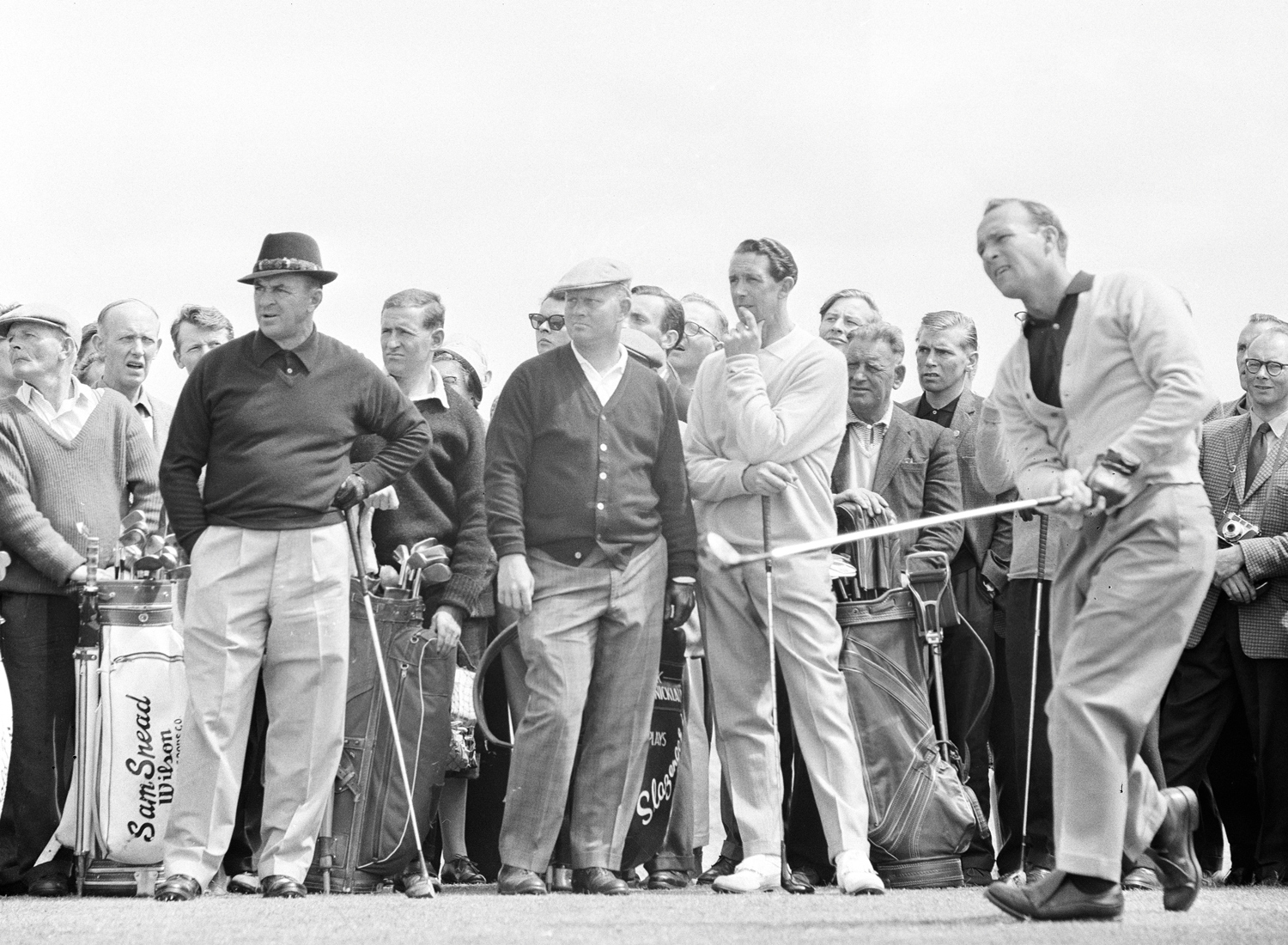
he cornerstone of a public links complex, which also includes the 18-hole Portland and nine-hole Craigend layouts, Royal Troon began life with just five holes in 1878. The full 18 holes, designed jointly by 1882 Open champion Willie Fernie and club professional George Strath, opened 10 years later, and the ‘royal’ designation was conferred upon its centenary in 1978.
After an upgrade from five-time champion James Braid, the course staged its first Open in 1923 (won by Englishman Arthur Havers)—and little has changed since. It is a classic out-and-back links, measuring well over 7,000 yards from the tips, but, as with most Open venues, line is more important than distance. There are a plethora of bunkers, many not visible from the tees, phalanxes of deep rough and a smattering of gorse and broom. A good score is generally made on the gentler outward half, where the views across the Firth of Clyde on a clear day can take the breath away. The inward holes, often playing into the prevailing northwesterly wind, are much sterner.
For many years, Royal Troon boasted the longest and shortest holes on the Open roster. The 601-yard sixth is no longer the longest, having been overtaken by the 14th on the Old Course at St Andrews and the 15th at Royal Liverpool, but the 8th is still the shortest at 123 yards. Known as the Postage Stamp, it came to prominence during the 1973 Open when Gene Sarazen, then aged 71, holed in one in the first round and followed up the next day by holing out for a two from one of the five greenside bunkers.

The second Open at Troon, in 1950, was won by South Africa’s Bobby Locke, and since then golf’s oldest major has returned at least once every decade. Arnold Palmer’s second Open triumph, in 1962, was significant both for the King’s imperious play that week and for the crowds that flocked to Troon, many of them gatecrashing from the beach.
This was the first of six consecutive Open successes by Americans at Troon: Tom Weiskopf (1973), Tom Watson (1982), Mark Calcavecchia (1989), Justin Leonard (1997) and Todd Hamilton (2004) followed. That run was only broken in 2016 by Sweden’s Henrik Stenson, who survived an epic shoot-out against Phil Mickelson with a closing 63.
As it closes out the 2024 major schedule, Royal Troon should once again serve as a classic stage for epic battles. Whether those battles are between the sport’s biggest names or obscure up-and-comers, we shall soon see.
Follow Us On


| Cookie | Duration | Description |
|---|---|---|
| cookielawinfo-checkbox-analytics | 11 months | This cookie is set by GDPR Cookie Consent plugin. The cookie is used to store the user consent for the cookies in the category "Analytics". |
| cookielawinfo-checkbox-functional | 11 months | The cookie is set by GDPR cookie consent to record the user consent for the cookies in the category "Functional". |
| cookielawinfo-checkbox-necessary | 11 months | This cookie is set by GDPR Cookie Consent plugin. The cookies is used to store the user consent for the cookies in the category "Necessary". |
| cookielawinfo-checkbox-others | 11 months | This cookie is set by GDPR Cookie Consent plugin. The cookie is used to store the user consent for the cookies in the category "Other. |
| cookielawinfo-checkbox-performance | 11 months | This cookie is set by GDPR Cookie Consent plugin. The cookie is used to store the user consent for the cookies in the category "Performance". |
| viewed_cookie_policy | 11 months | The cookie is set by the GDPR Cookie Consent plugin and is used to store whether or not user has consented to the use of cookies. It does not store any personal data. |